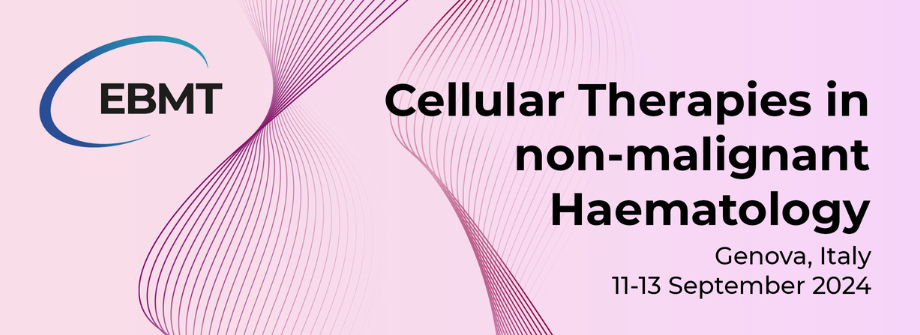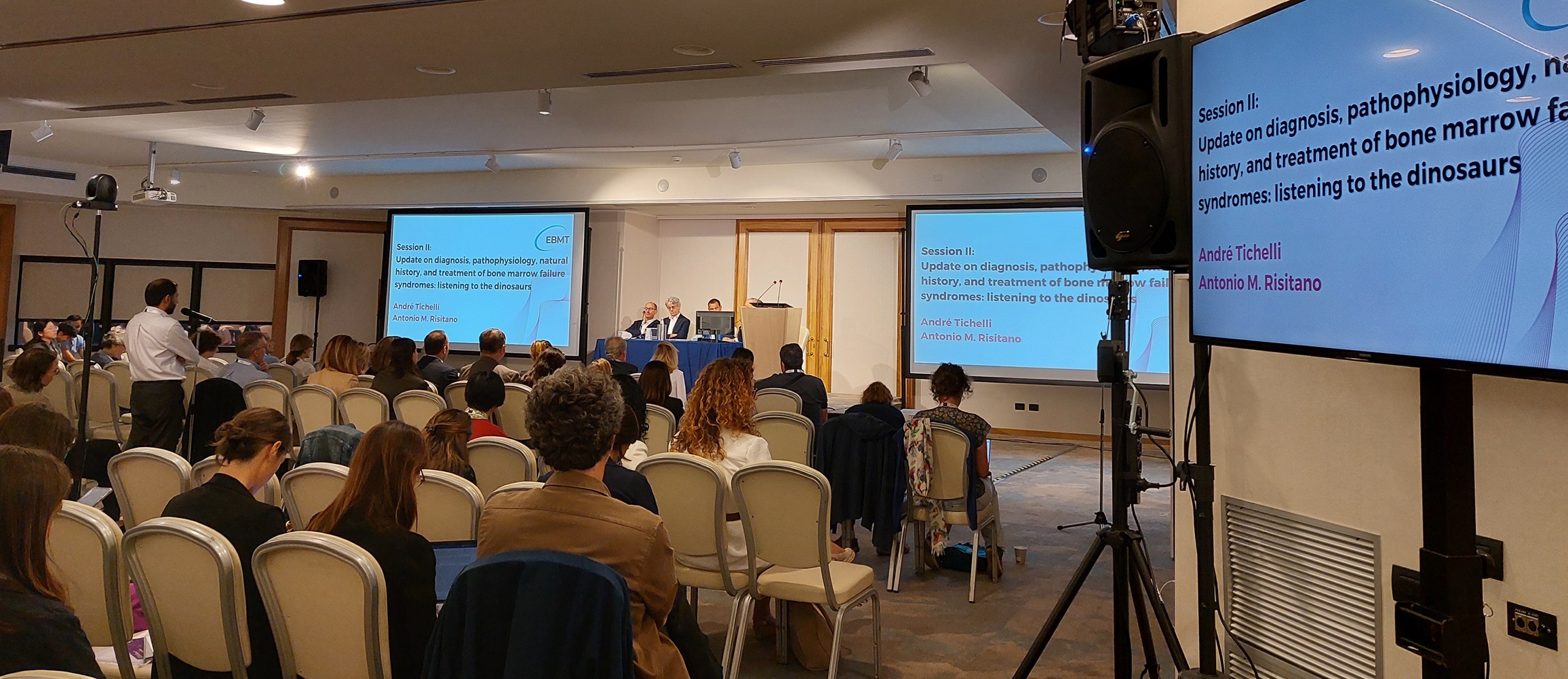
Summary report written by Matilde Cossutta and Giulia Consiglieri
Paediatric Immunohematology and Bone Marrow Transplantation Unit, San Raffaele Scientific Institute and San Raffaele Telethon Institute for Gene Therapy (SR-TIGET), Milan, Italy.
Hemoglobinopathies
The presentations on thalassemia and sickle cell disease covered comprehensively all aspects on diagnosis, pathophysiology and clinical course of the diseases. Dr. Angelucci, Dr. Forni and Dr. Baronciani agreed on the effectiveness of conventional therapies (transfusion, iron chelation therapy) in improving the overall survival, but much remains to be improved on the quality of life. Especially regarding iron chelators, most patients with mild or moderate overload show excellent survival if they maintain constant chelation for at least 10 years. However, it remains difficult to manage the frequency of transfusions, in particular to guarantee higher pre-transfusion hemoglobin level (9.5 g/dl), and the side effects of the drugs. The treatment in a specialized center with a multidisciplinary approach is certainly necessary to improve the outcomes. The only curative therapy approved for now is hematopoietic stem cell transplantation (HSCT) and, especially for sickle cell disease (SCD), the number of patients treated is increased, both in children and adult. For transfusion dependent thalassemia (TDT) the numbers drop overtime mainly in adulthood, due to negative impact of age on outcome. Nevertheless, according to Dr. Jaiswal presentation, even if we are heading towards innovative therapies, HSCT remains the better solution cost effective, particularly in developing countries. Dr. Algeri reported the main variables (age, disease severity and type of donor) affecting outcomes to be considered before embarking the transplant path. As nicely reported by Dr. Pilo, oxidative stress induced by iron accumulation impacts on HSC growth and bone marrow microenvironment, penalizing a good engraftment. For those who do not have HLA MSD or MUD, haplo-identical transplant is a valid alternative. In SCD Dr. Kassim reminded us that survival has remained around 48 years, unchanged over the last 25 years. Half of death causes are related to a multi-organ disease. The ideal curative therapy should include protection for sickle related complication with an acceptable toxic profile. The outcome of HSCT with MSD are excellent, with a 5-year survival of 91%. The debate concerns the haploidentical donor: in a very recent article Dr. Kassim concludes that for most adults related haploidentical HSCT with thiotepa + PTCy is valid option with limited transplant related morbidity and mortality, for children instead it requires additional strategies to decrease the risk of graft failure. A solution still under study could be precondition with hydroxyurea + hyper-transfusion. Finally, Dr. Corbacioglu nicely reported data on haploidentical HSCT in TDT, summarizing the results from the different approaches, post-transplant cyclophosphamide and aß/CD19 depleted haploidentical HSCT, showing that both treatments are feasible and increasingly comparable to MSD HSCT.
Bone marrow failure syndromes
In the bone marrow failure syndromes (BMF) session, Dr. Dufour reviewed the nature of these syndromes: overtime the number of patients with constitutional BMF has increased due to more accurate diagnostic methods. The correct diagnosis affects the success of the treatments, therefore genetic testing and enlarged diagnostic work up should be part of the diagnostic evaluation for all patients with severe aplastic anemia (SAA) to tailor therapeutic regimens. He then explored two genetic diseases characterized not only by BMF, but also by autoinflammation, risk of clonal evolution and immune dysfunction, that are SAMD9/L and DADA2. In this case, therapeutic approaches may vary based on the predominant clinical manifestations, leaving HSCT to severe hematological phenotypes.
Regarding transplantation in acquired AA, Dr. Drexler discussed what has changed in the treatment algorithm. Traditionally, HSCT was performed from MSD and in patients younger than 40 years of age. Over the last years, alternative donor has been used in patients not responding to first line IS treatment (MUD and haploidentical donor) and a German/Swiss algorithm moved the cut off age for HSCT to 50 years old. Accurate donor and recipient selection and a short time to transplant offer excellent outcomes in upfront HSCT from MUD for pediatric SAA and refractory cytopenia.
Dr. Miano nicely reported that unrecognized inherited BMF have worse OS after HSCT and genetic screening should be offered to all patients. In FA HSCT is a valid option to rescue marrow failure but may accelerate appearance of tumors and it is crucial to find the right moment for HSCT. Indeed, OS after clonal evolution is poor. In Diamond Blackfan Anemia (DBA) HSCT may represent an alternative therapeutic option for transfusion-dependent younger patients and in telomeropathies HSCT should be considered for bone marrow failure if a matched, preferably familiar, donor is available, following careful genetic evaluation of the donor and with a radiation- and alkilators-free conditioning.
Innovative therapies and non-transplant treatments
Throughout the sessions, innovative therapies and non-transplant therapies were recurring and important themes in all the diseases. Dr. Bertaina elegantly exposed the history and the rapid evolution of gene therapy/gene editing in their different approaches, from lentiviral vectors to CrispCas9. In recent years several products have been approved by the EMA and FDA for previously intractable diseases, changing patients’ care. In the context of hemoglobinopathies, all current clinical trials presented by Dr. De La Fuente, Dr. Bertain and Dr. Locatelli, using both gene addition and editing strategies, demonstrate efficacy and safety with regard to Hb levels, persistence of edited cells and treatment safety. However, most data are limited to adolescents and young adults, mobilization especially in SCD is still challenging, therapeutic drug monitoring of busulfan is fundamental to avoid overexposure and toxicity and integration events and insertional mutagenesis remain a safety concern. Among novel non-transplant therapies, Dr. Cappellini illustrated the achievement of Luspatercept in modulating several aspects of thalassemia, such as reducing ineffective erythropoiesis, reducing transfusion frequency and consecutively iron overload. The drug has been approved by EMA for adult patients affected by both TDT and NTDT, clinical trials are ongoing for pediatric cohort. In the bone marrow failure syndrome, Dr. De Latour, Dr. De Fontbrune, Dr. Halkes and Dr. Frieri discussed non-transplant treatments for Aplastic anemia (AA) and Paroxysmal nocturnal hemoglobinuria (PNH). For PNH the introduction of complement inhibitor (Eculizumab) drastically reduced the number of HSCT. Indications for Eculizumab treatment are based on clinical manifestations of the disease, not on the clone size. In AA, the triple therapy with ATG, CSA and Eltrombopag (ELT) represents the first line in children non eligible to MRD HSCT, but its real advantage is still a debated topic. For Diamond Blackfan anemia (DBA) steroids are the mainstay treatment and should be tested in every patient, together with regular transfusion. Steroids' associations with other drugs are not effective. Patients who remain transfusion-dependent are candidates for transplantation. Gene therapies in BMF could be promising therapeutic alternatives: Dr. Beier illustrated a phase I/II clinical trial of ex vivo gene therapy in patients > 12 years with telomeropathies with mild or moderate BMF, reporting promising results, and Dr. Rio concluded presenting a clinical trial on lentiviral-based gene addition in Fanconi Anemia (FA), explaining that gene therapy mimics the natural somatic mosaicism seen in milder phenotype. As in previous studies, stem cell collection in FA is challenging. However, the infusion in early stages of BMF with a sufficient number of corrected CD34+ cells results in progressive hematopoietic reconstitution without major side effects.
